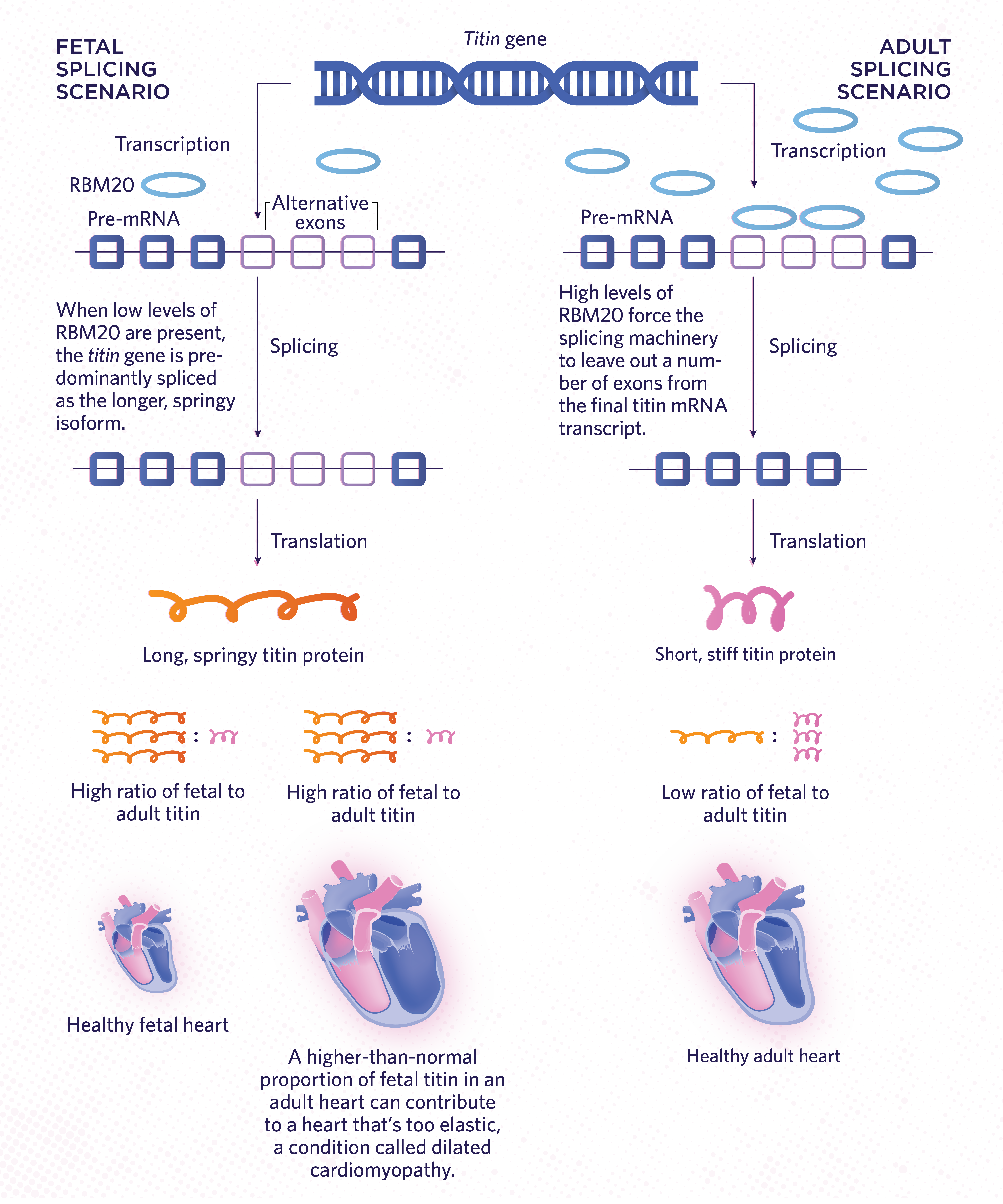While some details of the mechanisms of splicing remain to be worked out, it’s known that mature, edited mRNAs result from an interplay between multiple factors within and outside the transcript itself. Among these is the spliceosome, the machinery that carries out the splicing.
Each splicing event requires three components: the splice donor, a GU nucleotide sequence at one end of the intron; a splice acceptor, an AG nucleotide sequence at the opposite end; and a branch point, an A approximately 20–40 nucleotides away from the splice acceptor. These three “splice sites” are recognized by two core small nuclear RNAs (snRNAs) of the spliceosome, U1 and U2, followed by a protein, U2AF. The binding of these molecules to a transcript recruits a complex of three more snRNAs—U4, U5, and U6—which facilitates the splicing reaction.
A variety of factors affect how transcripts from a particular gene are spliced. Exon recognition...
 THE SCIENTIST STAFF |
Splicing Matters
Titin, which codes for a protein in muscle, is one example of a gene whose pre-mRNA transcript can be spliced in multiple ways to yield different protein isoforms. During development of the fetal heart, more exons are left in during splicing, which produces a relatively long, springy protein. In adult hearts, an RNA-binding protein called RBM20 associates with long stretches of the mRNA transcript during splicing, forcing the spliceosome to cut out those bits of DNA. The result is a relatively short, stiff protein. If RBM20 is missing or defective in adult hearts, these hearts will produce more fetal, springy titin protein relative to the stiff adult version. This is thought to reduce the capacity of the heart to contract, contributing to a condition known as dilated cardiomyopathy.
 THE SCIENTIST STAFF |
Read the full story.
Interested in reading more?






